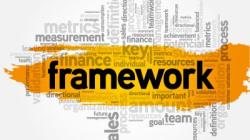Being a business partner requires a specific skillset. Furthermore, specific conditions should be in place to increase the chance of success. In the article, Anders Liu-Lindberg describes two main option for the implementation of the concept of FP&A Business Partnering.
The world of financial planning and analysis has observed changes of such magnitude that they cannot be described by our traditional statistical and analytical models.
In this article, Niels van Hove argues that while effective integrated FP&A can thrive in the right company culture, the FP&A process itself can influence and shape that culture. He calls for FP&A leaders to articulate goals that include clear expectations on behaviours. Doing so will not only improve effectiveness but also enable FP&A to play an active role in improving employee attitudes and satisfaction.
There are three critical roles in every balanced FP&A Team: the Architect, the Analyst, the Story Teller. How balanced is your FP&A organisation?
Key Performance Indicators (KPIs) are metrics that represent how various drivers of the business are performing. These drivers are often both financial and operational in nature. And while there is no one-size-fits-all when it comes to choosing the "right" metrics for your business it is critical that the data used be consistent and accurate.
FP&A establishes the foundation for thinking and learning about how processes affect outcomes. These actions can be guided by broad and narrow framing. In order for FP&A to add value toward these actions, it must take an active role in establishing a framework through the chart of accounts.
Pagination
Subscribe to
FP&A Trends Digest

We will regularly update you on the latest trends and developments in FP&A. Take the opportunity to have articles written by finance thought leaders delivered directly to your inbox; watch compelling webinars; connect with like-minded professionals; and become a part of our global community.






